3DPrint.com | The Voice of 3D Printing / Additive Manufacturing |
- 1st Inkbit Vista 3D Printer Operational at Saint-Gobain Research North America
- 3D Printing News Briefs, June 8, 2022: Clear Aligners, Standards, & More
- 3D Printed Gun Arrests Tripled in Less Than Two Years – 3DPrint.com Investigates
| 1st Inkbit Vista 3D Printer Operational at Saint-Gobain Research North America Posted: 08 Jun 2022 06:30 AM PDT Marking the finish line of a marathon lasting the better part of a decade, Medford, MA-based 3D printer startup Inkbit has announced that the first commercial Vista printer to be installed is now operational. Inkbit's inaugural customer is Saint-Gobain, the French manufacturing conglomerate. The company is deploying the Vista at Saint-Gobain Research North America, in Northboro, MA (the Boston metropolitan area). A spinoff of the MIT Computer Science and Artificial Intelligence Laboratory (CSAIL), Inkbit was co-founded by two MIT engineers: Davide Marini, who is now the company's CEO, and Wojciech Matusik, the company's CTO. With this background in mind, it's unsurprising that Inkbit would design a product that represents a new threshold being crossed in the history of 3D printing. Specifically, the Vista is the first commercially available 3D printer utilizing machine vision to achieve real-time feedback control. 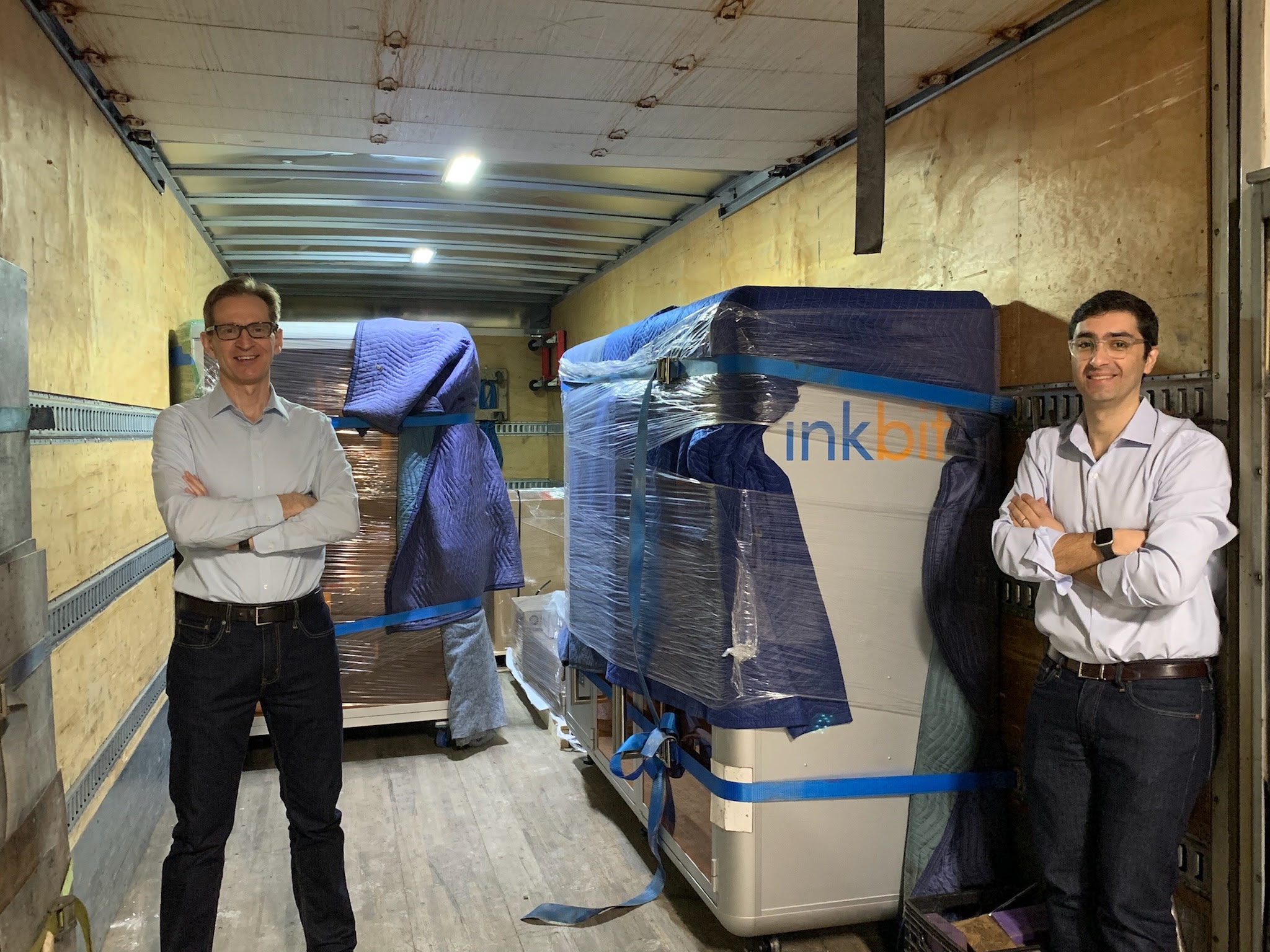
Saint-Gobain is among the oldest companies in the world, one of well under 1,000 on the planet founded before the 17th century that's still continuously operating. It's perhaps thanks to its willingness to innovate that it's still thriving. Recently, Saint-Gobain released an analysis about the promising results possible with additive manufacturing (AM) techniques at its Barcelona Sekurit automotive glass plant. 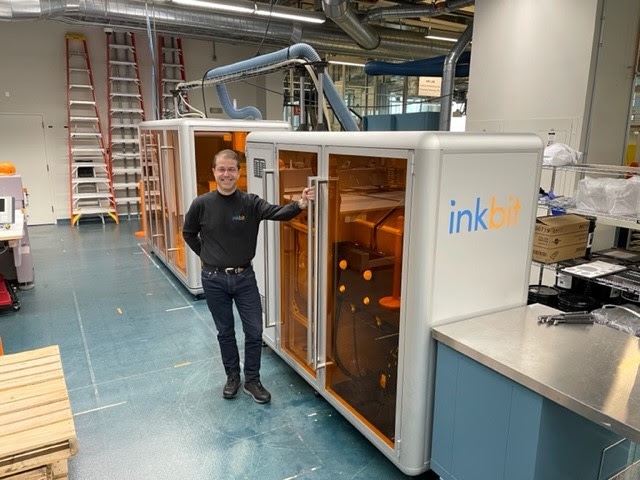 Saint-Gobain found that by adopting AM in its production line, it was able to save $182,000 and reduce lead times required for tooling by 93%. In the post about that report, I wrote, "When you start to consider the possibilities for Saint-Gobain increasing the number of AM applications it employs, as well as its incorporation of AM in additional divisions beyond Sekurit, the potential for significant long-term cost reduction becomes clear." Additionally, the company has become increasingly involved in additive construction. Adding machine learning and AI to that foundation, on top of what it has already done with AM, illustrates how serious Saint-Gobain is about the role of the technology in its future. Thus, Inkbit’s first customer is a keen one. The fact that the Vista is already capable of volume production means that Saint-Gobain has moved past merely testing how it wants to use AM, and has moved onto the phase of testing how it can create entire alternative digital supply chains that are automated from top-to-bottom (or if you prefer, "end-to-end"). The entire industry, as well as any sector banking on the future of AM, will be watching closely what's done with the Vistas sold in the first year of the machine's availability. It's likely that AM will only scale up once the precedent for automation that Vista has set becomes commonplace. The post 1st Inkbit Vista 3D Printer Operational at Saint-Gobain Research North America appeared first on 3DPrint.com | The Voice of 3D Printing / Additive Manufacturing. |
| 3D Printing News Briefs, June 8, 2022: Clear Aligners, Standards, & More Posted: 08 Jun 2022 06:00 AM PDT In 3D Printing News Briefs today, we’re discussing software first, as Arburg says its Freeformer software speeds up 3D printing by up to 55%. Then, Prodways Group announced that a major industrial project is accelerating with new orders for its 3D printers and materials. A new ASTM standard provides powder bed fusion design guidance for metal 3D printing. Finally, TU Delft researchers are working on the optimal design of 3D micro-architected implants. Arburg’s Freeformer Software Speeds Up 3D Printing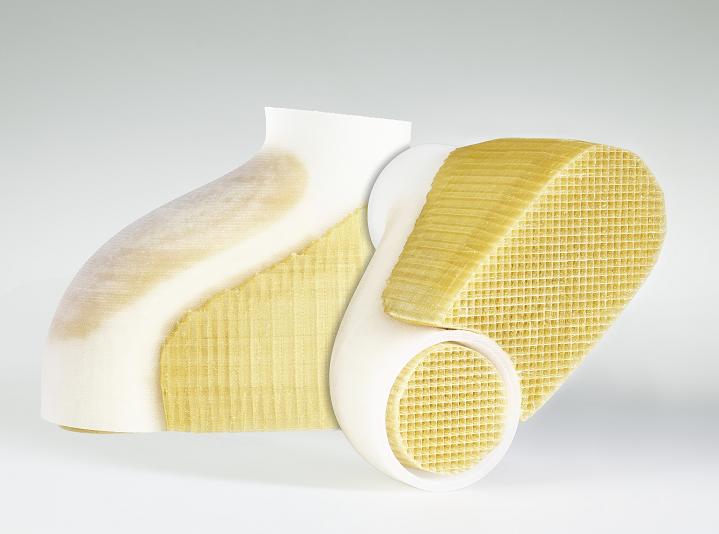 Applying support materials in a grid structure allows complex geometries to be achieved with a short build time. This example shows an S-shaped pipe made from white PP with Armat 12 as the support material. At the recent RAPID + TCT, Arburg demonstrated its updated software solution, which can speed up 3D printing time on its Freeformer by more than 50%. The software enables water-soluble Armat support materials for application in a lattice or grid structure optimized for its Arburg Plastic Freeforming (APF) technology. It speeds up print times for complex components, reduces the consumption of support materials, and negates manual finishing, since the supports can just be washed out. Arburg worked with established material partners and universities to develop its new water-soluble support material, which comes in two grades: Armat 11 for standard materials like ABS, and Armat 12 for polypropylene (PP). Using its optimized software, the Freeformer lays down the support materials to build up a lightweight lattice or grid with tiny air pockets, and because it’s only about 20% solid, it can be formed much more quickly. Pair this with the water-soluble Armat support materials, and the printing time—along with material costs—goes way down. Arburg demonstrated how its Freeformer software speeds up 3D printing by fabricating an S-shaped pipe out of PP and Armat 12 at the RAPID show. The optimized grid structure required internal support, but the print time was reduced by about 50% in comparison to a fully solid structure. Prodways Group Announces Orders for 3D Printers & MaterialsAt the end of 2021, Prodways Group landed a major industrial project from a worldwide leader in medical and dental products distribution, which generated an order for eight of its MovingLight 3D printers to mass produce clear aligners. Now, the company announced that its customer, which manufactures more than 1.5 million clear aligner parts a year, is accelerating the project, and has ordered six additional LD20 3D printers, scheduled to be delivered this month and next. This brings the customer’s installed global base of Prodways Group printers to 14. The six additional 3D printers aren’t the only thing the client ordered, however: Prodways Group also received large orders of its high-performance PLASTCure Absolute Aligner liquid resin from this customer as well. The company had already delivered eight tons of this material to the client since the beginning of 2022, and will now provide it with an additional ten tons of resin for 3D printing clear aligners. With 14 MovingLight LD20 3D printers, the customer could consume nearly 20 tons of resin a year, and as the project continues to develop, even more 3D printer and resin orders could be coming for Prodways Group. New ASTM Standard for Metal PBF DesignASTM International recently announced a new standard, which will offer advice to designers and engineers who are thinking about using powder bed fusion (PBF) technology to 3D print metal parts. The standard, which will soon be published as F3530, was developed by ASTM’s F42 Committee on Additive Manufacturing. The new guidance will offer an overview of common post-processing operations for PBF 3D printing, difficulties in completing these operations, and the best ways to address the challenges. According to ASTM International member Farhan Khan, managers and other decision-makers considering the use of PBF 3D printing will also benefit from new standard F3530.
Optimizing Design of 3D Micro-Architected Implants Figure 10. The design and performance of (a) solid, (b) uniform lattice, (c) optimized heterogeneous lattice titanium implants in terms of local bone remodelling and the Hoffman interface stress risk indices. A trio of researchers from TU Delft recently published a paper on their work to optimize the design of 3D micro-architected implants, which resulted in computational methods for designing orthopaedic hip implant stems to make them last longer. These types of devices are often made out of solid materials, and can majorly change load transmission to surrounding bone tissue, which can lead to issues such as bone resorption and interface instability. The TU Delft team developed a parametric micro-architecture with good mechanical properties and functional attributes, and their computational method was used to synthesize 3D printed patient-specific implants with what they called “heterogeneous micro-architecture.” These implants consider functional constraints, in addition to lowering the risk of “load-induced interface fracture and peri-prosthetic bone remodelling.”
The post 3D Printing News Briefs, June 8, 2022: Clear Aligners, Standards, & More appeared first on 3DPrint.com | The Voice of 3D Printing / Additive Manufacturing. |
| 3D Printed Gun Arrests Tripled in Less Than Two Years – 3DPrint.com Investigates Posted: 08 Jun 2022 05:30 AM PDT 3D printed gun violence is on the rise. Recent events, including mass shootings at an elementary school in Texas, a deadly assault at a medical facility in Oklahoma, and last year's anti-Semitic rampage at a German synagogue, led to serious concerns surrounding ghost guns, particularly 3D printed ones. Taking these events into account, as well as a cascade of 3D printed gun-related arrests worldwide, several governments are taking measures to restrict privately made firearms without serial numbers. Specifically, Europol organized a 3D printed firearms conference in the Hague last May (the first one in Europe), while the Biden administration called for an assault weapons ban and other measures to curb gun violence. Undoubtedly, 3D printed guns or gun parts that some people choose to create at home with their machines have increased concerns that homemade 3D guns could live up to their prematurely violent reputation. How Many People Have Been Arrested for 3D Printed Guns?In light of these events, 3DPrint.com began exploring recent 3D printed gun incidents and confirmed that over 90 people have been arrested in the last three years. The number of arrests is higher in countries like Canada, the U.S., and Australia, representing 18%, 44%, and 17% out of total arrests, respectively. As we dive more deeply into the emerging trends, it is noticeable that North America leads the arrest statistics, followed by Europe, and then Oceania. However, it's important to note that not every country reports all of its arrests, so there will be more than we accounted for. For example, in the U.S., arrest records are public, yet each state can determine whether they want them to be readily accessible. Even in states that consider arrest records to be public information, there may be exceptions, and some will not be released publicly. In countries like Australia, if a case attracts media attention, there is little a defendant can do to avoid the information getting published. Because ghost guns and 3D printed guns in particular are almost impossible to trace, the job of law enforcement agencies to prosecute them is made even tougher. In the last decade, police forces found out several people were making guns at home with 3D printers as part of organized crime raids or investigations into other criminal activities. For instance, in May 2021, two men and one woman were arrested in the town of Keighley in the United Kingdom as part of an investigation into right-wing terrorism. All three were charged with possessing components of 3D printed weapons, and two were members of an online group where terror manuals and weapons guides were shared among neo-Nazis. As a result, they were all found guilty of terror offenses a year later and convicted. The Era of Homemade FirearmsEver since 2013, when gun-rights activist Cody Wilson built the Liberator, the world's first-ever 3D printed gun, he launched what would be known as an era of homemade firearms. Using a Stratasys Dimension series 3D printer purchased on eBay, the then law student spend very little money to create the gun, using metal only for the firing pin, which strikes the primer of a cartridge to ignite the charge and fire the weapon. From the public data available, we have noted that the number of arrests has gone up significantly since 2019. Only 15% of the total arrests for 3D printing guns occurred between 2013 and 2019. In October 2013, a man from Manchester, U.K., was arrested after police suspected he was making 3D printed components for what they called at the time "next-generation weapons." Thought to be the first-ever seizure of 3D printed gun parts in the U.K. (and most likely the world), these, along with a 3D printer, were discovered during a gang raid as part of Challenger, one of the largest multi-agency operations to target organized crime in that city. Then, in 2014, a man was arrested in Japan for possessing 3D printed handguns, after five devices were found during a police raid on his house. The 27-year-old college employee from Kawasaki was charged for illegally possessing firearms made with 3D printers, marking the first such case in Japan, a country that takes pride in its low crime rate and has strictly regulated gun ownership. Several cases followed, including at least five in Australia, eight in the U.S., as well as a few in Europe, including in Sweden and the U.K. But that was before 2020, when the number of arrestees began to increase from just a handful to more than a dozen. The number of arrests then doubled and tripled in 2021 and 2022 respectively, compared to the previous year. 2022: The Year of 3D Printed Gun ArrestsAccording to the data, 42% of all 3D printed gun-related arrests were in 2022, that’s roughly 44 people arrested. We also estimate that roughly 31% of all arrests occurred in 2021, and 12% in 2020. This jump in the number of 3D printed gun crimes detected through police activity has alerted law enforcement worldwide. During the International Conference on 3D Printed Firearms, organized by Europol and the Dutch National Police in the framework of EMPACT Firearms and hosted at the University of Leiden, some 120 participants from 20 countries addressed the latest challenges that security forces face to counter this threat. The team leader of Europol's Analysis Project Weapons and Explosives, Martin van der Meij, said at the conference that there is a growing number of 3D printed weapons being seized in investigations across Europe and that the threat is "very much on Europol's radar." 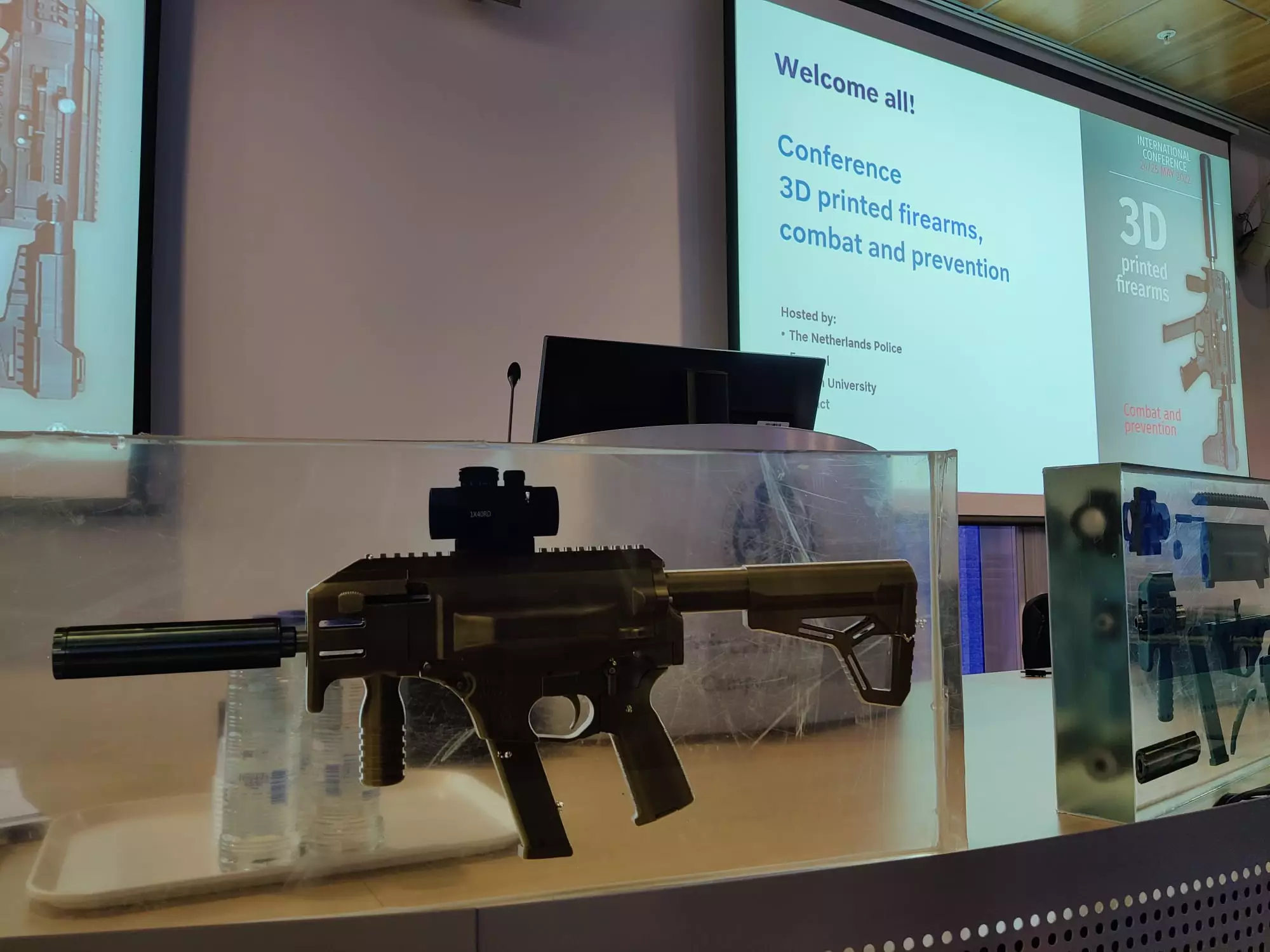 3D printed guns showcased at the International Conference on 3D Printed Firearms. Image courtesy of Europol. Across the Atlantic, President Joe Biden is trying to persuade a reluctant Congress to tighten gun laws in the aftermath of horrific mass shootings in recent weeks in the U.S. According to the Gun Violence Archive, there have already been more than 240 mass shootings this year in the US in which four or more people were shot or killed. That's not to say that 3D printed guns were involved in all of these events, but they have been found in a few of attackers' homes in 2022 and earlier. The U.S. hasn't passed a major federal gun control measure since the 2012 Sandy Hook Elementary School shooting in Connecticut that left 26 dead. Finding a middle ground to compromise over gun safety legislation will not be easy. In late May, President Joe Biden talked about banning most handguns. Then, on June 2, the House Judiciary Committee approved a wide-ranging package of gun control legislation called the "Protecting Our Kids Act." The eight-bill package includes calls to raise the age limits on semi-automatic rifle purchases from 18 to 21 years old; creating a grant program to buy back large-capacity magazines; establishing voluntary, safe practices for firearms storage; and building on executive measures to ban bump stock devices and so-called ghost guns made with 3D printing. Earlier this year, the Biden Administration said it would introduce ghost gun reforms to the 3D printing industry. Known as "Final Rule 2021R-05F," this rule redefines firearm parts and bans the business of manufacturing the most accessible ghost guns. In addition, the rule will affect upper receivers, suppressors, and CAD files for 3D printing. Even simple marketing materials—like instructions for how to assemble an 80 lower jig or how to mill an 80 percent lower receiver—may be rendered illegal at the sole discretion of the U.S. Bureau of Alcohol, Tobacco, Firearms, and Explosives (ATF) on a case by case basis. Whether partly or entirely manufactured with a 3D printer, these types of "ghost guns" are becoming a headache for many law enforcement agencies worldwide. Especially since many of the people arrested have been directly related to white supremacist and neo-Nazi movements. However, it will be difficult to curtail 3D printed guns, mainly since any efforts to regulate or even ban 3D guns must satisfy constitutional scrutiny under both the First and Second Amendments. So, even though the debate over 3D printed guns is far from over, the striking number of arrests in recent years is drawing attention from lawmakers and security forces, but where that trail will lead, we still don't know. The post 3D Printed Gun Arrests Tripled in Less Than Two Years – 3DPrint.com Investigates appeared first on 3DPrint.com | The Voice of 3D Printing / Additive Manufacturing. |
| You are subscribed to email updates from 3DPrint.com | The Voice of 3D Printing / Additive Manufacturing. To stop receiving these emails, you may unsubscribe now. | Email delivery powered by Google |
| Google, 1600 Amphitheatre Parkway, Mountain View, CA 94043, United States | |
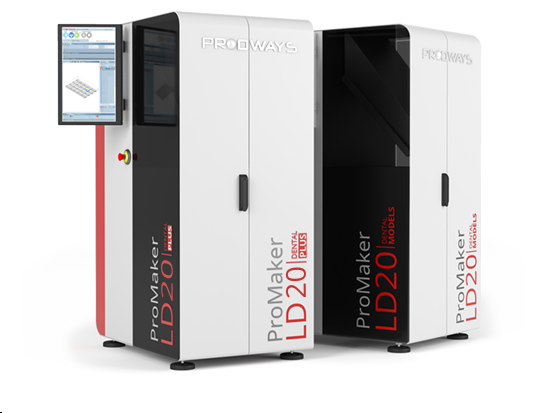

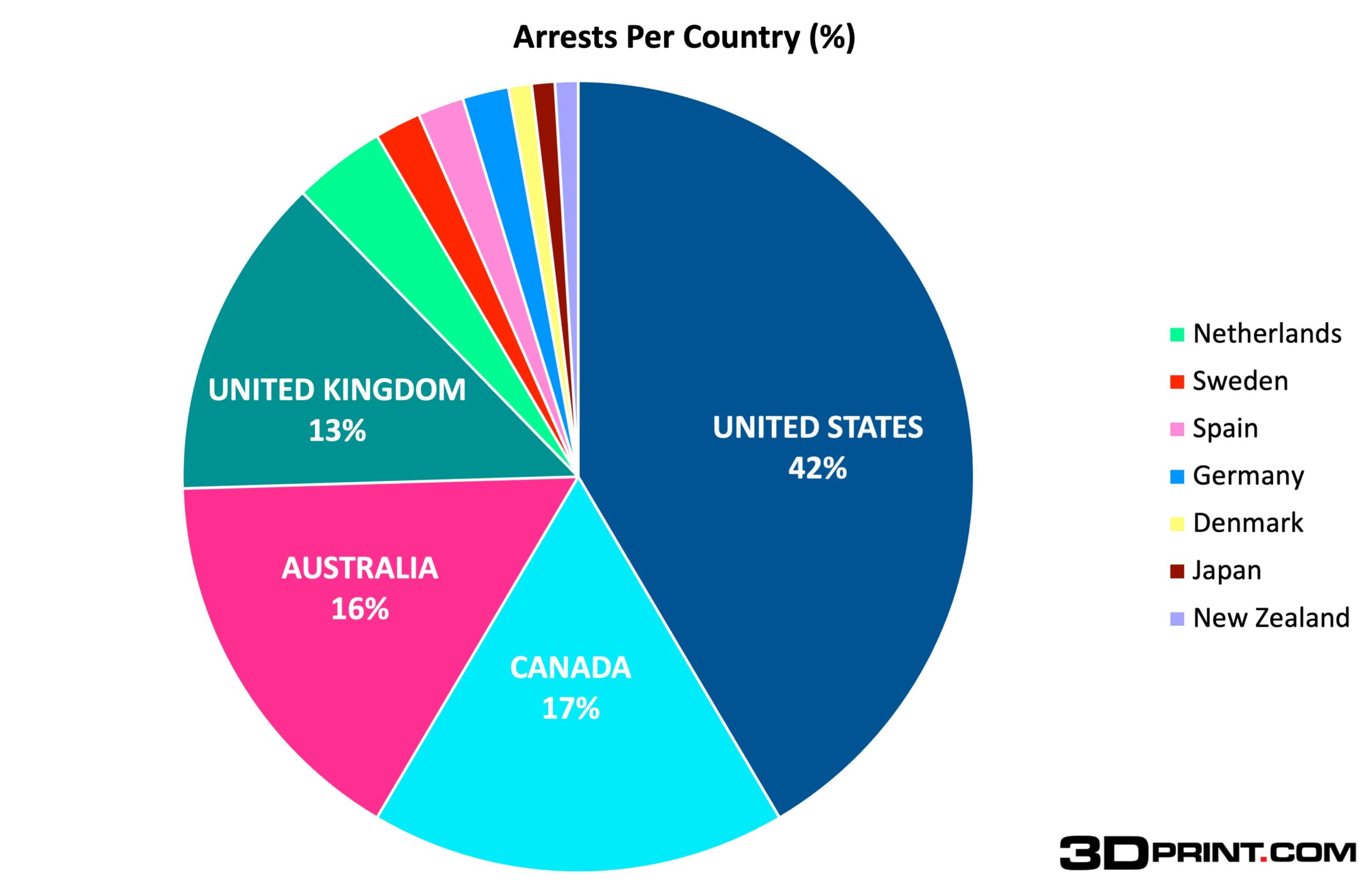
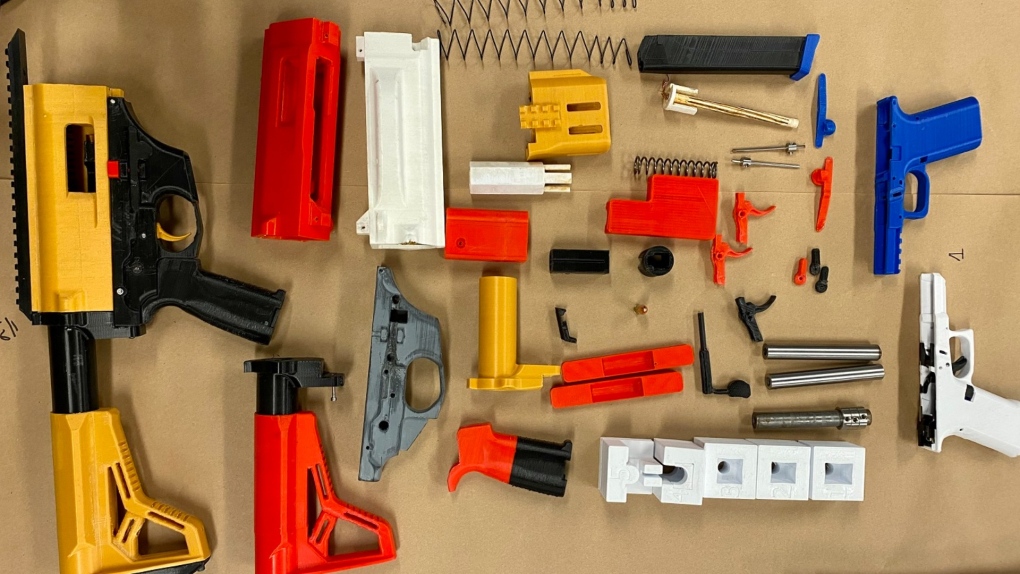


0 comments:
Post a Comment